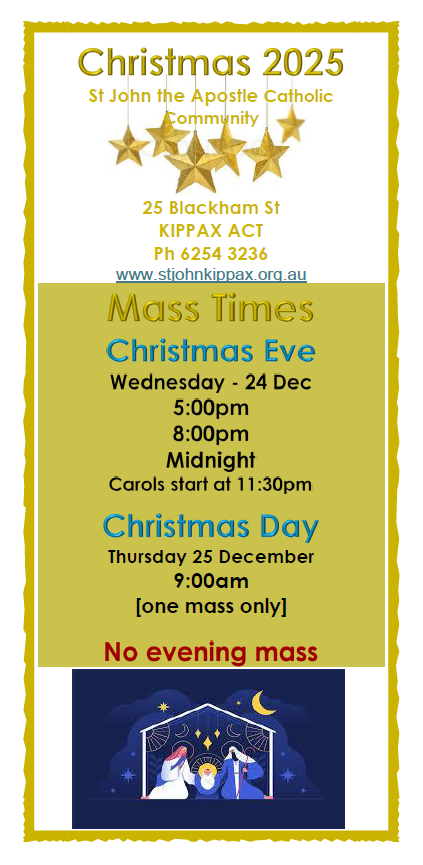History - N C
Neighbourhood Communities were set up in 2006 by the then parish priest Michael Fallon MSC.
In 2013 as part of the Pastoral Plan the parish is looking at the Neighbourhood Community concept with a view to revitalising it.
The concept from 2006 is below:
1. The goal
The parish (thank God) is too big for people to really get to know each other in such a way that they feel fully part of the parish community. 442 households filled in the recent parish census. By dividing the parish into smaller neighbourhood areas, and by setting up structures that facilitate people within those smaller neighbourhoods to get to know each other better, it is hoped to create an even better sense of community that will also affect the larger parish. As people get to know the people in their neighbourhood, there is more opportunity for friends introducing them on a broader scale.
What distinguishes Neighbourhood Communities from other groups within the parish is that it is essentially geographic. If a person lives in a certain neighbourhood they belong to that neighbourhood community automatically.
People obviously need other groups (Charismatic prayer group, Catholic Women’s League, Family groups, Teams of Our Lady, Cursillo etc – just to name a few), but these are not organised geographically (nor should they be). The Neighbourhood Community has only one aim, and that is to encourage community within a neighbourhood, and to look after our neighbours such that gifts and needs come together in simple ways, and ‘loving one’s neighbour’ becomes a richer reality.
2. The strategy
Within the geographical boundaries of the parish of Saint John the Apostle, Kippax, we have organised 20 neighbourhood communities, names after the suburb. There are 8 neighbourhoods in Holt, 5 in Latham, 4 in Higgins, 3 in Macgregor and 1 in Florey. Experience may suggest changes in these areas.
In each neighbourhood there is a contact person (or couple). There is no expectation of meetings. Nor is there any expectation of visitation.
Some of the needs that may emerge within the neighbourhood are the following. The contact person may be happy to carry out some of these services, but others within the area may also be willing.
• visiting new parishioners • taking communion to the sick & visiting them in hospital • visiting those who are grieving • getting to know families with children at school who may have little contact with the worshipping Sunday community. • cooking a meal for a neighbour in need • driving people to church who need it.
These are meant only as examples. The idea is to involve as many people as are willing, but each involvement will be small, being limited to the neighbourhood. Of course, people can do whatever they are moved to do. This is not in any way restrictive. The aim is to set up a strategy that makes sure that everyone is being looked after, and people are getting to know and love their neighbours better. In some cases the contact persons in the neighbourhood may want to do one or other of the above themselves or they may find people willing and able to offer themselves. However, their key role is to know what is happening in the neighbourhood and to oversee what is going on, especially being in close liaison with the presbytery.

